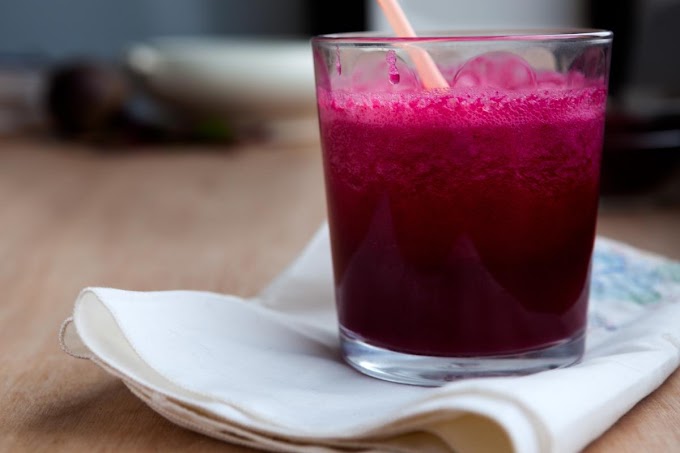Chimichurri sauce is one of the most beloved condiments in Argentine cuisine, celebrated for its bright, fresh flavors and versatility. Typically served with grilled meats, especially steak, chimichurri adds a vibrant punch to the rich and savory taste of beef. Whether you're hosting a barbecue, preparing a steak dinner at home, or simply looking to elevate your meal, chimichurri is the perfect sauce to add a burst of flavor.
In this blog post, we'll walk you through everything you need to know about chimichurri sauce, including its origins, essential ingredients, step-by-step instructions, and tips on how to use it. By the end, you'll not only know how to make a delicious chimichurri sauce for steak but also understand the cultural importance and variations of this cherished recipe.
What Is Chimichurri Sauce?
Chimichurri sauce originated in Argentina and Uruguay, where it is traditionally used as a marinade or accompaniment for grilled meats, especially steak. It's a vibrant, herbaceous sauce made from parsley, garlic, olive oil, vinegar, and various spices. While the classic green chimichurri (chimichurri verde) is the most common, there is also a red version (chimichurri rojo) that incorporates red pepper flakes or smoked paprika.
Chimichurri's combination of fresh herbs, tangy vinegar, and rich olive oil makes it a perfect partner for grilled or roasted meats, providing a fresh and zesty contrast to the bold flavors of steak. The sauce is often used in asados (Argentine-style barbecues) and has become a favorite worldwide due to its simplicity and robust flavor profile.
Essential Ingredients for Chimichurri Sauce
Before diving into the recipe, let's take a look at the core ingredients that make chimichurri sauce so special:
Parsley: Flat-leaf parsley is the most commonly used herb in chimichurri, providing a fresh, green flavor. It's the base of the sauce and should be finely chopped.
Garlic: Garlic adds a bold and pungent flavor to the sauce. Depending on your preference, you can adjust the amount of garlic to make it more or less intense.
Olive Oil: High-quality extra virgin olive oil is the preferred choice for chimichurri. It carries the flavors of the herbs and spices and adds richness to the sauce.
Vinegar: Red wine vinegar is traditional in chimichurri, offering a tangy bite that balances the richness of the oil and meat. Some recipes might use white wine vinegar, but red wine vinegar provides more depth.
Oregano: Dried oregano adds earthiness and a hint of spice to the chimichurri. Fresh oregano can also be used if you prefer a more delicate herb flavor.
Red Pepper Flakes: These add a bit of heat to the sauce. The level of spice can be adjusted to suit your taste.
Salt and Pepper: Seasoning is key to bringing out the full flavors of the sauce and enhancing the taste of the steak.
Optional ingredients may include fresh cilantro for added flavor complexity, lemon juice for extra brightness, or smoked paprika for a subtle smoky note.
Step-by-Step Recipe: How to Make Chimichurri Sauce for Steak
Now that you're familiar with the essential ingredients, let's get started on making the perfect chimichurri sauce for your steak.
Ingredients:
1 cup fresh flat-leaf parsley, finely chopped
3-4 garlic cloves, minced
1/4 cup red wine vinegar
1/2 cup extra virgin olive oil
1 tablespoon dried oregano (or 2 tablespoons fresh oregano, chopped)
1/2 teaspoon red pepper flakes (adjust to taste)
Salt and pepper to taste
Optional: 1/4 cup fresh cilantro, chopped; juice of 1 lemon for added acidity
Instructions:
Prepare the Parsley and Garlic: Start by washing and drying the parsley thoroughly. Finely chop the parsley, either by hand or using a food processor. Mince the garlic cloves.
Combine the Ingredients: In a medium-sized bowl, mix the chopped parsley, minced garlic, and oregano. Add red pepper flakes to taste.
Add Vinegar and Oil: Pour the red wine vinegar into the mixture, followed by the olive oil. Stir until all ingredients are evenly combined. The consistency should be more of a loose, vinaigrette-like sauce rather than a thick paste.
Season to Taste: Add salt and freshly ground black pepper to taste. Adjust the seasoning as needed, depending on your preference for saltiness and heat.
Let It Rest: Allow the chimichurri sauce to rest for at least 30 minutes before serving. This will allow the flavors to meld together and become more robust. You can make the sauce a few hours ahead or even the day before, storing it in the refrigerator. Just be sure to bring it back to room temperature before serving.
Serve with Steak: Chimichurri sauce is traditionally served as a condiment for grilled steak. Simply drizzle it over the steak after it's been cooked, or use it as a marinade before grilling. You can also serve it on the side for dipping.
Tips for the Best Chimichurri Sauce
Don't Over-Process the Herbs: When chopping the parsley (and cilantro, if using), avoid turning it into a paste. You want the herbs to be finely chopped but still maintain their texture.
Adjust the Spice Level: If you prefer a spicier chimichurri, increase the amount of red pepper flakes. For a milder version, reduce or omit the flakes altogether.
Use Fresh Ingredients: Fresh parsley and garlic are key to achieving the best flavor. Avoid using dried parsley, as it won't provide the same vibrant taste or texture.
Balance the Acidity: The red wine vinegar should offer a pleasant tanginess, but if you find the sauce too acidic, try adding a pinch of sugar or a splash of lemon juice to mellow it out.
Let It Sit: Allowing the chimichurri to rest after mixing is crucial for letting the flavors meld. This can be anywhere from 30 minutes to a day in advance. The longer it sits, the more developed the flavor becomes.
How to Use Chimichurri Beyond Steak
Chimichurri sauce is incredibly versatile and can be used in a variety of ways beyond just steak:
Marinade for Meats: Use chimichurri as a marinade for chicken, pork, or lamb before grilling or roasting. The herbs and acidity work well with all types of protein.
Vegetable Dressing: Drizzle chimichurri over roasted or grilled vegetables for a fresh and flavorful finishing touch.
Sandwich Spread: Spread chimichurri on sandwiches or wraps to add a zesty kick. It pairs particularly well with roasted meats or grilled vegetables.
Dip for Bread: Chimichurri also makes a fantastic dip for crusty bread, similar to how you might enjoy olive oil and balsamic vinegar.
Final Thoughts
Chimichurri sauce is a simple yet flavorful condiment that can elevate any steak or grilled dish. With just a handful of fresh ingredients, you can create a sauce that bursts with herbal, garlicky, and tangy notes. Whether you prefer it mild or spicy, chimichurri is easy to customize to suit your taste preferences.
By mastering this classic Argentine sauce, you'll have a go-to recipe that brings out the best in your steaks and adds a new level of flavor to your culinary repertoire. So, the next time you're grilling steaks, don't forget to whip up a batch of chimichurri—your taste buds will thank you!








Social Plugin